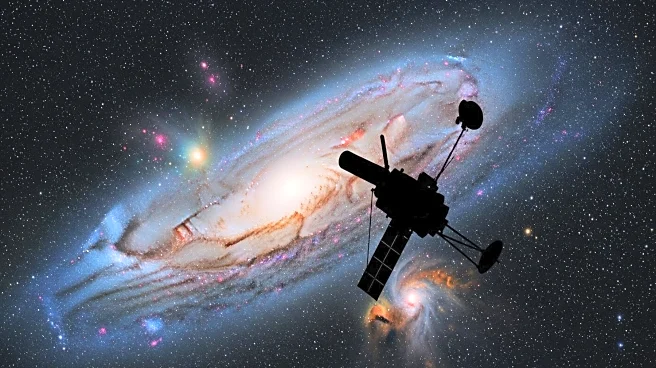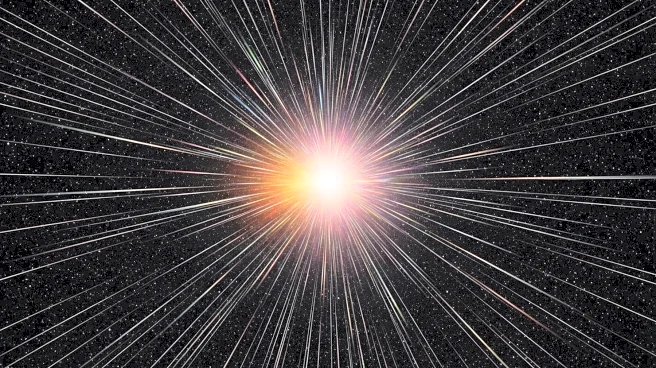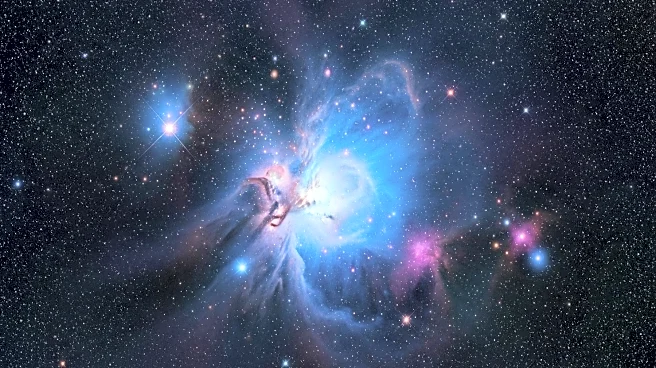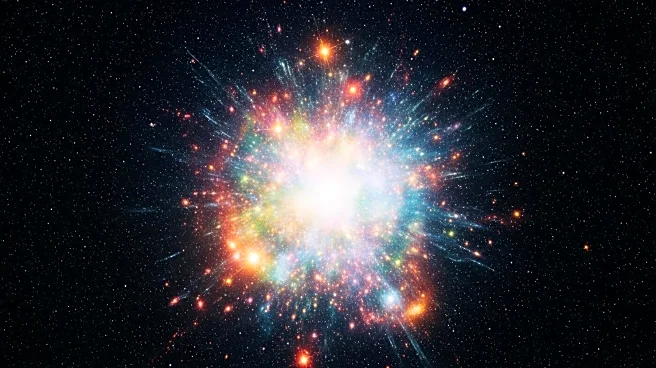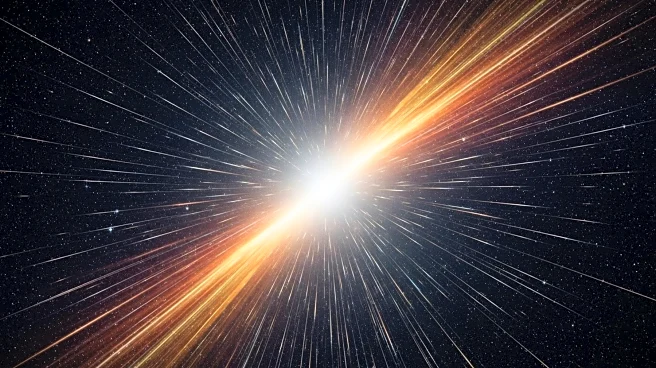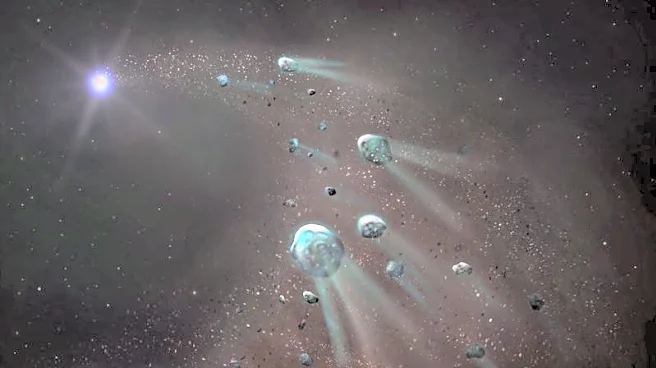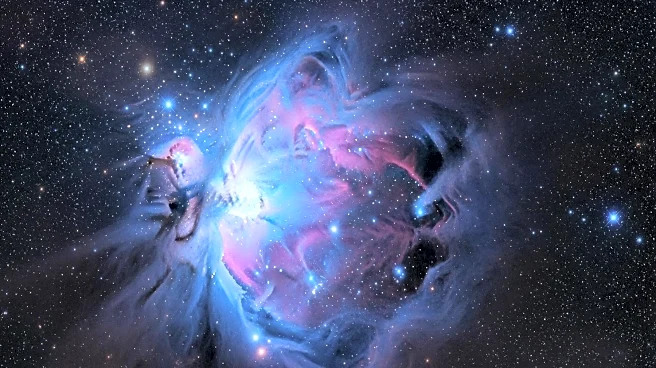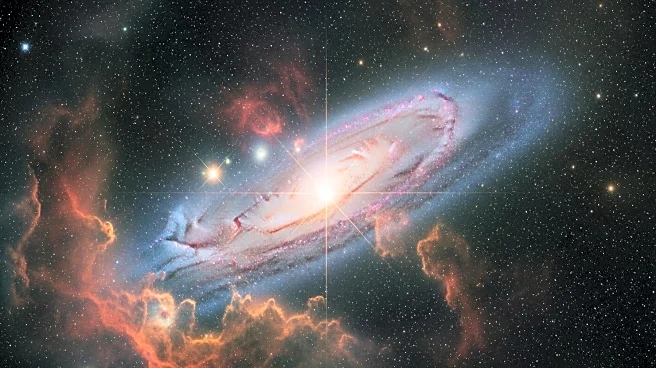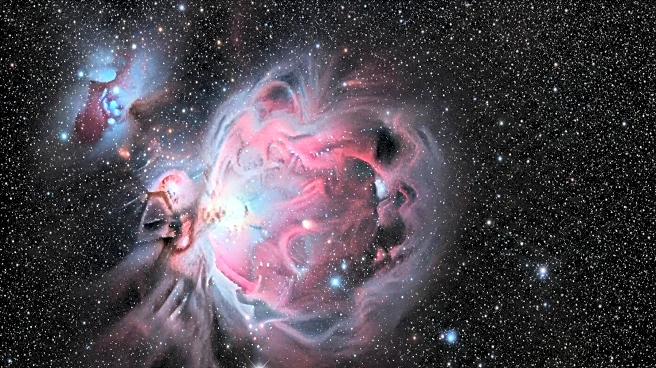What's Happening?
Astronomers have observed a unique gamma-ray burst, designated as GRB 250702BDE, which lasted nearly a full day, challenging existing theories about such cosmic phenomena. Traditionally, gamma-ray bursts are brief, lasting from milliseconds to minutes, but this event defied those norms. Detected by NASA's Fermi Gamma-ray Space Telescope and later confirmed by the Hubble Space Telescope, the burst originated outside the Milky Way. Researchers are exploring the possibility that the burst resulted from a tidal disruption event involving an intermediate-mass black hole, a rare cosmic object. This discovery has sparked significant interest and debate within the scientific community as it challenges current understanding of gamma-ray bursts and the life cycles of stars.
Why It's Important?
The observation of GRB 250702BDE is significant as it challenges existing astronomical theories and could lead to new insights into the behavior of gamma-ray bursts and black holes. Understanding such phenomena is crucial for advancing knowledge of the universe's structure and the processes governing cosmic events. The involvement of an intermediate-mass black hole, if confirmed, would provide valuable data on these rare objects, which are larger than typical stellar-mass black holes but smaller than supermassive black holes. This could have implications for the study of galaxy formation and evolution, as well as the role of black holes in these processes.
What's Next?
Researchers are focused on determining the exact location and energy output of the gamma-ray burst to gain a deeper understanding of its origins. Continued observation and analysis using advanced telescopes will be essential in testing hypotheses and refining existing models of gamma-ray bursts. The scientific community is likely to engage in further research to explore the implications of this event, potentially leading to new discoveries about cosmic phenomena and the universe's fundamental laws.

